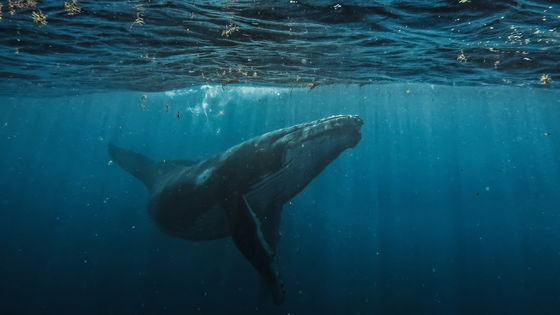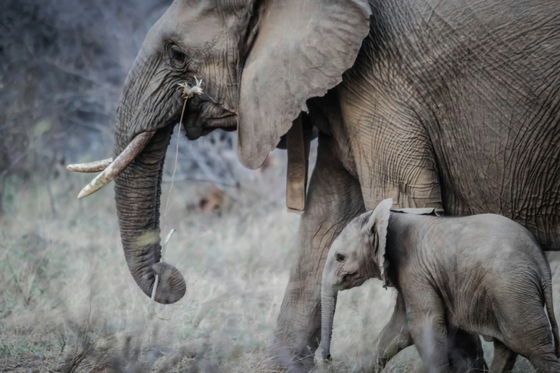AI is playing a major role in deciphering the calls of wild animals, including whale 'dialects'

Shane Gero, a cetacean biologist at Carleton University in Ottawa, Canada, has been trying to understand how whales communicate for the past 20 years, and has discovered that whales make specific sounds that indicate they are part of a family, and that just like humans speak different languages, sperm whales also make 'dialects' depending on where they live. To decipher whale communication, researchers are using artificial intelligence (AI).
Will artificial intelligence let us talk to the animals?

Animals such as dolphins, elephants, and birds make sounds that have specific patterns and are used to communicate with each other. However, it is very difficult for humans to distinguish and understand the subtle differences in animal sounds. AI is well suited to distinguishing such subtle differences, and in recent years biologists and computer scientists have been using AI to decipher animal sounds.
AI-assisted research over the past year has revealed that African savanna elephants and common marmosets both give their companions names. Researchers are using machine learning tools to map the calls of crows. Improved computer model capabilities may shed light on how animals communicate and allow scientists to explore animal self-awareness, which could inspire increased efforts to protect endangered species.
However, while AI-based language analysis and translation of human language is progressing at a breakneck pace due to the vast number of examples, the same cannot be said for animal sounds, so it seems that translation tools will not be available anytime soon. 'I think it's a big assumption to think that we can turn all that technology on another species and somehow train it to start translating,' said marine microbiologist David Gruber, who founded Project CETI, an international project to understand the acoustic communication of sperm whales.

Project CETI focuses on sperm whales and sponsors Guerro's research, but even before Project CETI, Guerro had spent thousands of hours in the Caribbean, where he and his colleagues collected data on more than 30 whale families that live near islands.
Whales spend most of their time searching for food at depths of up to 2000 meters. Because sunlight does not reach the depths of the ocean, they use echolocation by making clicking sounds to search for prey. Sometimes they communicate with other whales by making 30 to 40 consecutive clicking sounds called 'codas.'
Gero and other researchers found that whales form groups called 'clans,' led by females, each with its own unique diet, social behavior, and habitat use. Some clans consist of thousands of individuals and communicate in their own dialects. Dialects can be distinguished by the tempo of the coda; two different clans use the same pattern of five consecutive clicks, but the tempo and timing of the pauses are different. Gero described the whale dialects as 'cultural boundaries between clans.'
You can see what the whale's coda sounds like in the video below.
To understand the rhythm and tempo of the coda, the team manually created spectrograms of the whale sound recordings - a way of visualising sound by depicting characteristics such as volume and frequency that, in humans, can be used to identify individual sound units, called phonemes.
This process is time-consuming; it would previously take team members about 10 minutes to isolate each individual click from a minute of recording. But the machine learning algorithms have significantly sped up the process. 'It also helped us isolate which sounds were made by which animals,' Gero said of the use of machine learning.
But the use of AI has made it possible to take the research a step further: instead of classifying individual words by hand, the researchers were able to find codas that correspond to entire sentences or conversations between whales.
Additionally, they found subtle variations in the spacing of the clicks, which the scientists named 'rubato,' a musical term for slight tempo changes that add expressiveness to a piece of music, and occasional additional clicks, which they named 'ornament,' after the musical practice of adding extra notes on top of a melody.
It's not yet clear what each feature means, but by using different combinations of rhythm, tempo, rubato, and ornamentation, whales can create a huge number of different codas. The researchers collected a dataset of 8,719 codas and discovered what they call the sperm whale's phonetic alphabet. The team speculates that the whales use codas as building blocks to share complex information.
As the AI uncovers these features of whale vocalizations, the team is continuing to study what they mean. For example, they are trying to analyze the meaning of individual features such as rubato by analyzing whether rubato increases before a dive or decreases when a mother communicates with her calf. 'You can't begin to ask, 'When is rubato important?' unless you know that rubato exists,' Gero said.

Sperm whales aren't the only creatures that use specific vocalizations to identify themselves. Behavioral ecologist Mickey Pardo has used machine learning to determine that wild African elephants have what appear to be names. The team says that elephants emit low rumbling sounds to let each other know when they're out of sight or approaching, and when mothers are interacting with their calves.
Pardo and his team were interested in why elephants respond to certain calls but ignore others, so they trained a machine learning model on the vocalizations that elephants responded to to see if the calls were unique.
When the machine learning model was tasked with predicting which individual the call was, it succeeded in predicting with 27.5% accuracy. 'This may not seem like a very high success rate, but remember that elephants are unlikely to use their names every time they call,' Pardo said. In addition, when the machine learning model was trained on all elephant calls, it was only 8% accurate in predicting which individual the elephant was calling.
Neuroscientist David Omer of the Hebrew University of Jerusalem in Israel has done similar experiments with marmosets. By training a computer to recognize marmoset calls, he and his team found that marmosets from the same family share similar acoustic signatures when calling each other by name.
Pardo hopes to use the same technology to see if it can decipher other elephant vocabulary, such as location words. The team notes that elephants make certain calls when they are trying to move their flocks, and some of these calls could mean they are moving to a specific location.

Related Posts:







